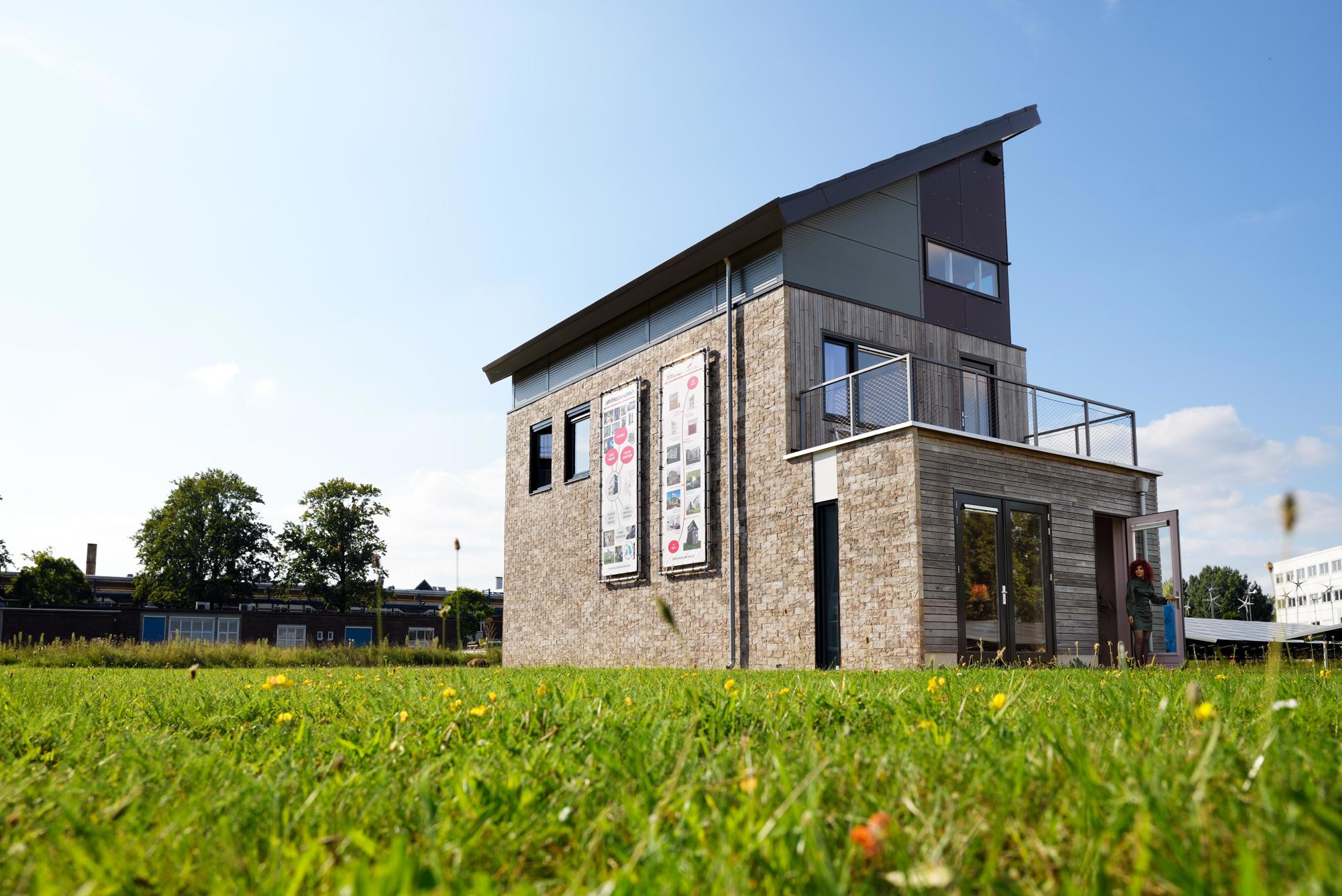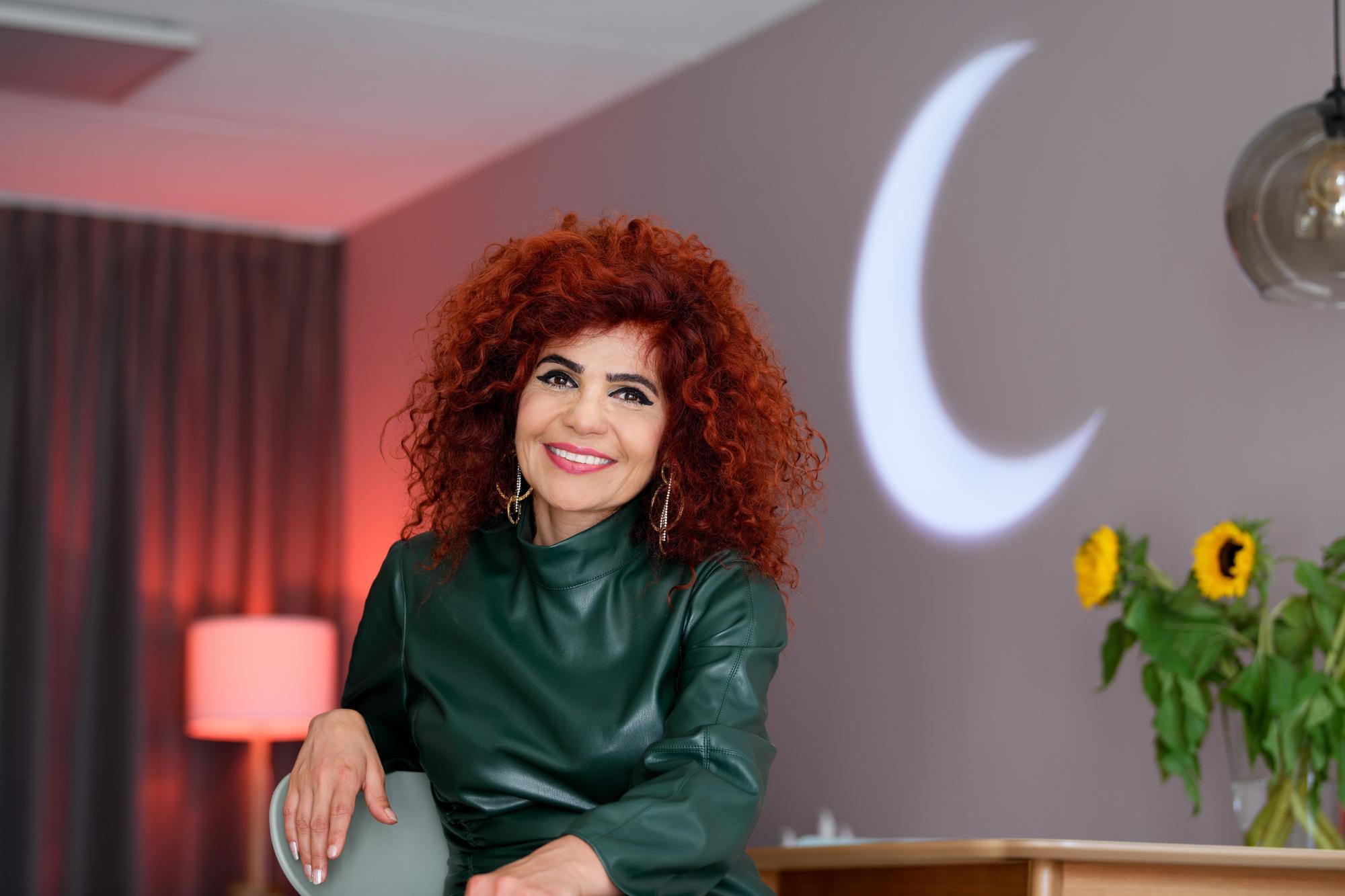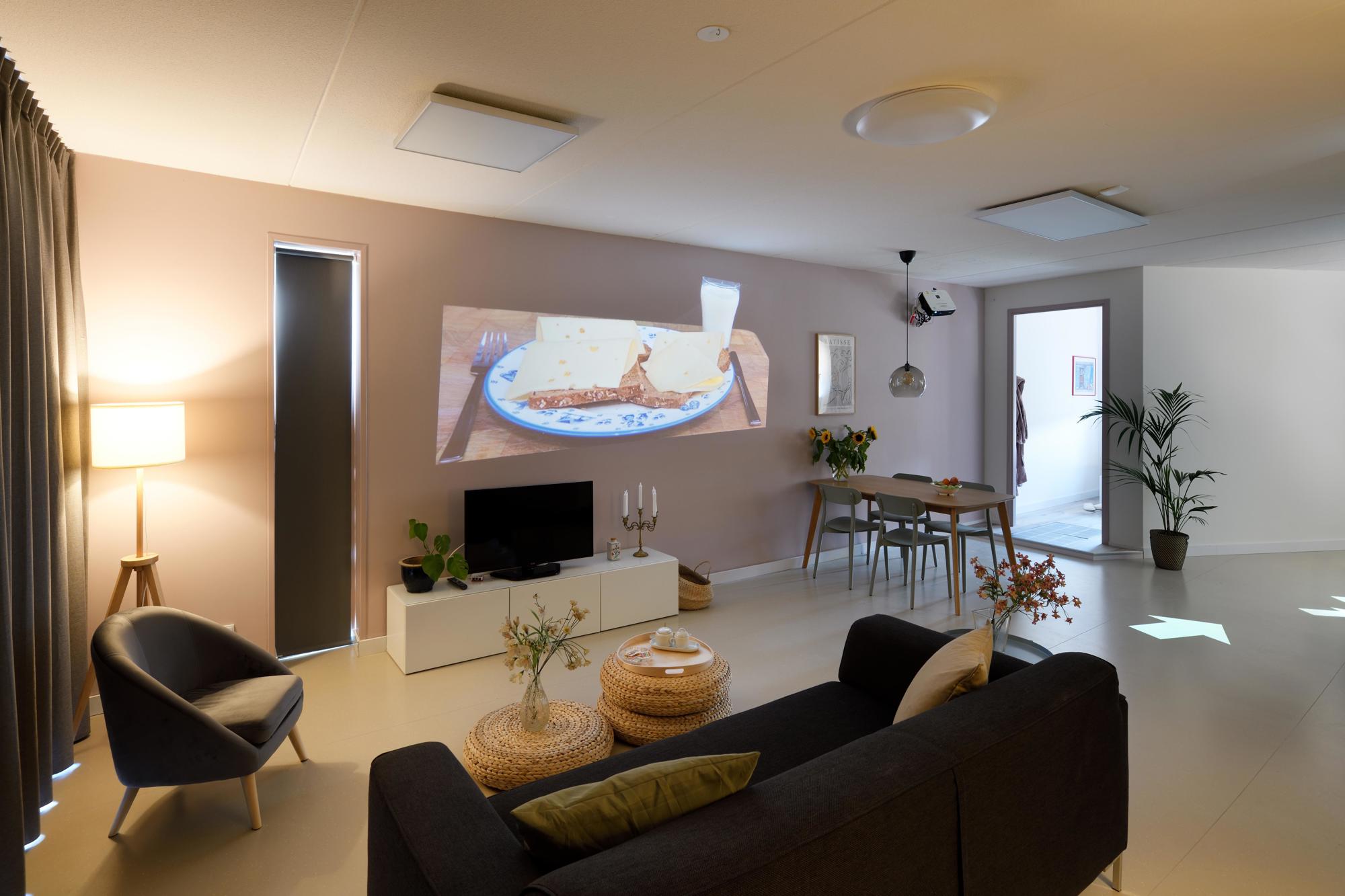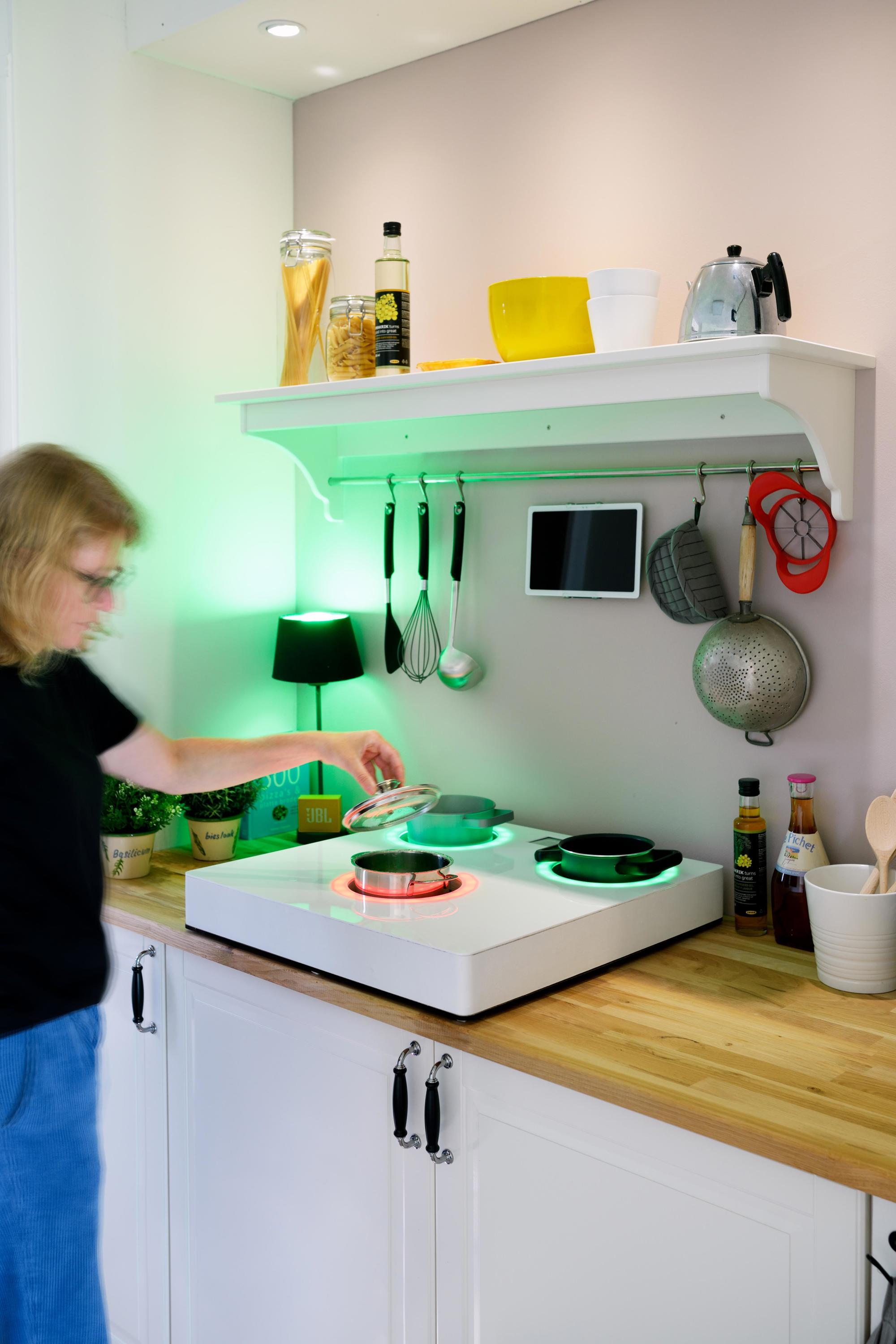According to Masi Mohammadi, Professor of Smart Architectural Technologies at TU/e, a home can be much more than just a roof over your head. Together with her teams she is working on an ‘empathic home’ for people with dementia.
Most of us want to carry on living in our own homes for as long as possible. Government policy is also geared towards achieving this in the face of population ageing and the associated increase in healthcare costs. The main benefits are obvious: elderly people can carry on living in familiar surroundings where they can more easily maintain social contacts, remain independent for longer and retain control over their lives. But there are also serious drawbacks. When extra help is needed from the municipality, getting it often takes a long time or the request is dismissed as ‘inappropriate’, meaning that people have to rely heavily on informal carers. Furthermore, elderly people who live on their own often fall prey to loneliness. The whole exercise is even more difficult and sometimes downright dangerous when the person in question suffers from dementia.
So wouldn’t it be fantastic if your home were capable of managing and organising (part of) the informal care. Although this sounds like something from a science fiction film, Masi Mohammadi, Professor of Smart Architectural Technologies at Eindhoven University of Technology (TU/e) and lecturer in Architecture in Health at HAN University of Applied Sciences, has been working on this challenge for years, together with her teams and many practical partners. An experimental home has even been built in Arnhem. An ‘empathic home’ that understands you, responds to your needs and encourages you, for example, to exercise or to eat and go to bed on time - things that are far from self-evident for people with dementia.

Your home can be so much more than just a roof over your head, says Masi. “It can help you in your daily life, encourage you to keep doing what you are still capable of - going for a walk for example - and even make you healthier.” At TU/e and HAN, Masi's teams of researchers, designers, developers and technicians are busy researching all three of these functions. In the form of ‘assistive technology’, for example, that you can install in a house (such as a stair lift), where the main focus is on what works best. The second function exploits the living environment as a stimulus, and several good examples have been incorporated in the experimental empathic home. And, last but not least, the function of the living environment as a form of medicine. Masi's views on the latter are clear: “I am convinced that the built environment can actually make people healthier, provided we succeed in arriving at a more complete understanding of how natural elements in our living environment can have a healing and regenerative effect and link them effectively to smart technology.”

Although traditional aids such as brackets in the shower and toilet, alarm buttons and a stair lift have also been installed in the experimental home, the main focus lies on technology that stimulates the occupant. For example – as part of the Guiding Environment project - the experimental home includes an interactive living room that uses projections, light and sound signals to help occupants establish a healthy rhythm during the days and nights, by encouraging them to go outside, go to sleep or eat a sandwich. That may sound simple, but it isn’t. Because, in order to act with empathy, like an informal human carer, a system needs to understand what someone can and cannot do, so that the occupant never feels overburdened or stressed. It also has to adapt itself to the specific individual, to avoid disrupting that person’s daily life. “That’s why we decided not to add any extra elements”, says Masi. “For example, there are no robots in the house and the occupant does not have to wear any sensors on his/her body. All the technology is installed inside the house and not visible in most cases.” Obviously the technology has to work perfectly because faults are always disruptive.

In the experimental home, arrows on the floor show the route to the kitchen and a projection of a cheese sandwich and a friendly voice remind the occupant that it’s time for lunch. These are just examples, Masi stresses. Because something that works well with one individual may have a completely different effect on somebody else. The sound of a voice may confuse or even startle some people, because they think they are alone in the house. Research in a nursing home showed that an arrow on the floor can work well, but only if the arrow points in the direction in which a person is looking. So the system needs to analyse the resident’s behaviour first to determine the direction in which he or she is looking. Consequently, validation, i.e. testing how residents react to their solutions in the real world, is a crucial part of the ‘Empathic Design Model’ that Masi has developed for her teams.
The projection of a sandwich on the wall doesn't work for everyone either. And if you use a pictogram, for example, many elderly people with dementia will not even recognise it. That was an eye-opener for Masi: “I’m an architect, so I tend to explain everything with drawings. But the research carried out by one of my teams showed that you have to use an actual photo. Some nursing home residents said that they felt hungry when they saw the photo of the cheese sandwich; that’s a positive outcome. But it still isn’t the complete answer. After all, some people don’t like cheese!” This means that ‘customisation’ is required; something the teams have achieved with Artificial Intelligence. Masi calls this “our greatest challenge”.
She uses the smart floor in the house as an example to explain how a system learns from behaviour and can subsequently adapt. The floor analyses movement data and therefore ‘knows’ over time the exact size of the steps a resident takes and how he or she places his or her feet. If the person’s weight transfers to the back foot, it may indicate that the resident is about to fall. “The system can relay this signal as a call for help, but the damage will already have been done. So some nursing homes are now using a type of strap-on airbag to prevent falls.”

In addition to the complexity of developing customised solutions, these examples also clearly illustrate that building a home capable of taking over (part of) the care of an elderly person suffering from dementia requires a great deal of research and many different products. “It's only when you start deconstructing things that you realise how many different activities we engage in every day.” You cannot possibly piece together a complete picture with a small group of people, or from the perspective of a single discipline. Masi's projects establish a connection between what people want and need and what is architecturally and technically possible. Collaboration and co-creation are the magic words here: between the social sciences and medical science and civil engineering, between TU/e and HAN, between the laboratory and actual practice. In order to simplify this interaction and learn effectively from each other, Masi founded the Dutch Empathic Environment Livinglabs (DEEL) Academy, a collaborative platform that includes housing corporations, social organisations, the business community, healthcare organisations and knowledge institutions.
Based on the many enthusiastic reactions that Masi continues to receive, those involved - or more precisely the people who care for them - can’t wait to start using the first concrete results. “I have been approached by so many people who are convinced that this is the best solution for their parent, partner or child, that I regularly say to myself: hurry up and get your products out there!” But she immediately adds a cautionary warning: “We should avoid looking for quick fixes because this is a complex challenge; it will take time, and trial and error. So my advice to everyone working in this field is to avoid trying to scale up too quickly. There is nothing wrong with setting up a pilot first.”
You can copy the full text of this story for free at the touch of a button